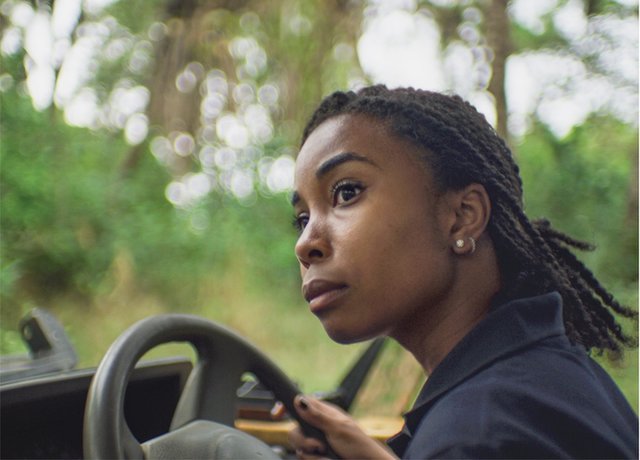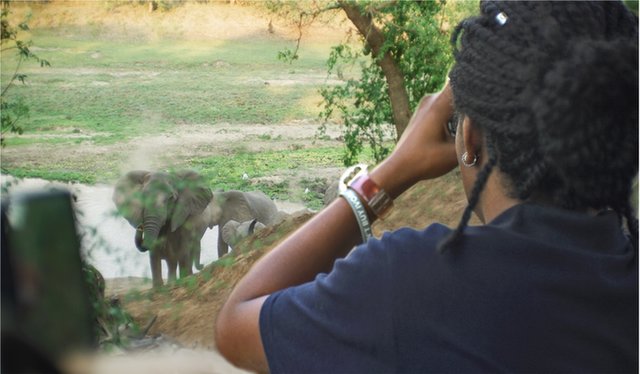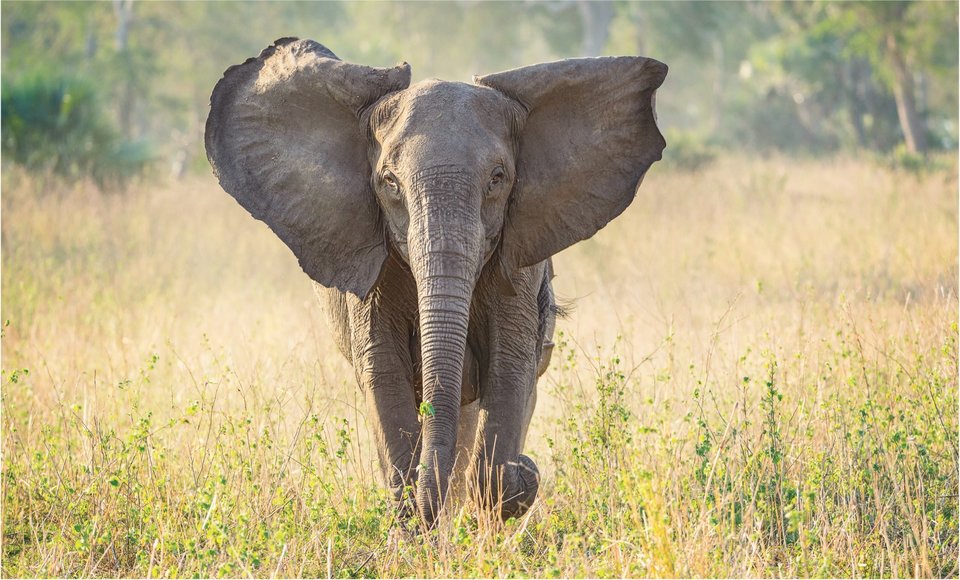
DominiqueGonçalveslooksforelephantsfrombehindthe wheel.
InterestingEncounters
Gonçalvestrackstheelephants’movements.Shealsospendsalotoftimeinthefieldobservingthem.Shetakesphotographsofeachanimal.Somehavedistinguishingmarks,likeamissingtusk.Othershavebeenmarkedbywarwithabulletholethroughtheearoramissing tail.
Gonçalvesalsorecordstheirbehavior.Shepaysattentiontohowtheyaregroupedandhowtheyspendtheir time.
Oneday,Gonçalveswastravelingwithastudentwhohadaninterestinelephants.Theteamhadnotseenanelephantinthreedays.Theywentoutlookingfor them.
Afteralongdrive,theyfoundsomeelephants.Gonçalvesstoppedhervehicletowatchthemandtotakepictures.Shenoticed,outofthecornerofhereye,onefemaleelephanthidingbehindatree.Betterkeepmyeyeonthatone,shethoughtto herself.
Gonçalvesbegantakingpicturesandwritingnotes.Whenshelookedagain,thefemaleelephanthadmovedcloser.Itwasnowhidingbehindaclosertree.Gonçalvesturnedherheadbacktothe group.
Thatwasamistake.Thefemaleelephantcameforwardinamockcharge.Shestoppedabruptly.Thenshechargedagain,gettingclosertothevehicle.Ifshechargesonemoretime,Gonçalvesthought,we’redone for.
She did.

Gonçalvesobservesthebehaviorofelephantsata water hole.

Thefemaleelephantcharges.ThisphotowastakenmomentsbeforeshehitGonçalves’ vehicle.
ElephantIntervention
Theelephantboltedforward,strikingthevehicleonthemetalgratewithallherstrength.Shesteppedbackandchargedagain,shearingoffthegrate.Theelephantthenstartedpushingagainstthevehiclewithher head.
Next,theelephanttriedtoreachthepassenger’ssidewhereGonçalves’studentsat.Shehitthewindowonthestudent’sside,shatteringtheglassandsendingitinalldirections.Gonçalves’student ducked.

elephantsin Gorongosa
Whentheelephanthitthecaragain,theybeganyellingandbangingonthedoors.Theytriedtomakeenoughnoisetosendtheelephantaway.Buttheelephantchargedathird time.
Justthen,thematriarch,whohadbeenpeacefullygrazing,startedtomove.Gonçalvesthinksthatthematriarchmayhavemadealow rumble.
Thatrumblewouldhavestoppedtheattack.Whateversignalwasgiven,theattackingelephantstoppedandranbacktojointhe others.
Thevehiclewasbadlydamaged.Drivingawaywasnotanoption.Theywerestranded.Withherheartbeatingwildly,Gonçalvesradioedforhelp.Whenhelparrivedinanothervehicle,sheandherstudent,badlyshaken,spedoffwiththeir rescuers.
LastingImpression
ThereisstillalottolearnabouttheelephantsinGorongosa.Despitethetraumaofthewar,GonçalvesknowsthatGorongosaisamagical place.
Sheremembersoneofherfirstelephantencounterswithagroupofyoungbulls.Onebullapproachedthedoorofhervehicle.Hecamesoclosetoher,shecouldseeherownreflectioninhislarge,ambereye.Hestudiedher,asiftryingtodecidewhatshouldbedoneabout her.
Afterstaring,thebullmovedgentlyaway.Hedidnotperceiveherasathreat.Heandtheotherbullswentbacktograzing,asifnothinghadhappened.ButGonçalvesfeltthatherlifechangedforeverinthat moment.

